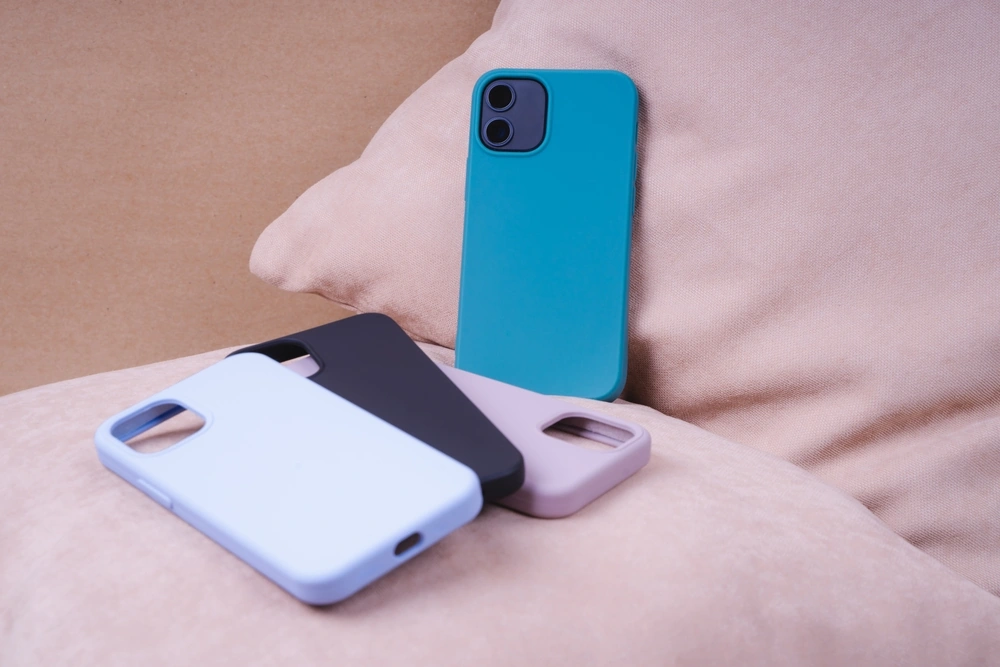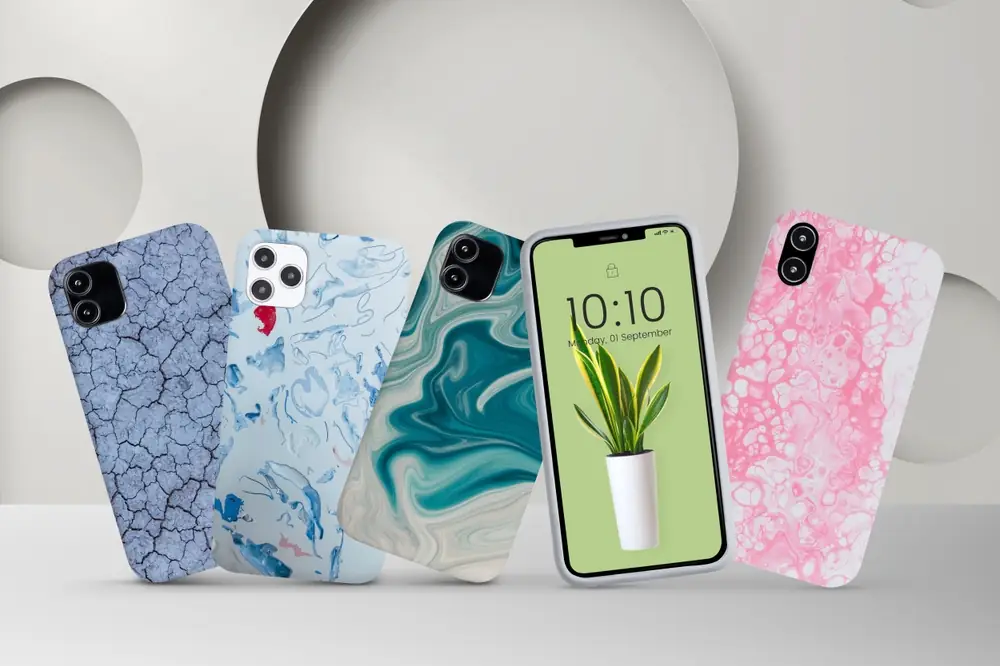Phone cases have become far more than decorative add-ons. They are now essential accessories, chosen not only for their appearance but also for the level of protection they provide. Behind every case is a carefully selected material that determines how it performs in everyday use.
Among the most common options are polycarbonate (PC) and thermoplastic polyurethane (TPU). PC is valued for its strength and polished finish, while TPU offers flexibility and excellent shock absorption. In recent years, hybrid cases that combine both materials have gained popularity, giving users the durability of PC with the comfort and grip of TPU. Understanding these materials provides a clearer view of how today’s phone cases are designed to balance style, protection, and practicality.
In this blog, we will explore the strengths and weaknesses of these phone case materials, compare their performance, and highlight what businesses should consider when selecting phone cases that meet both customer expectations and market demand.
Why Phone Case Material Matters for Your Business
The material of a phone case influences more than just how it looks on display. It shapes customer perceptions of quality, determines the level of protection offered, and often guides purchasing decisions.
Many wonder which material provides the best protection, while others are drawn to cases that feel lighter, slimmer, or easier to grip. Recognising these preferences allows businesses to stock cases that appeal to a broader range of customers, from those seeking an affordable everyday option to those willing to invest in a premium product.
Choosing the right material also plays a role in long-term strategy. It affects how a product line is positioned in the market, how pricing tiers are structured, and ultimately, how customers view a brand. With a strong understanding of PC, TPU, and hybrid materials, businesses can create product offerings that are not only varied but also aligned with changing customer expectations.
Polycarbonate (PC): Strong, Sleek, and Reliable
Polycarbonate, or PC, is a tough thermoplastic valued for its combination of strength, clarity, and heat resistance. Its molecular structure gives it an edge in durability, making it suitable not just for mobile accessories but also for safety gear and automotive parts.
Key advantages of PC in phone cases
- Scratch resistance: PC cases maintain their appearance over time, even with frequent use.
- Premium finish: The smooth, polished surface supports sleek and stylish designs.
- Clarity: Clear PC cases showcase the phone itself, appealing to customers who prefer minimalistic protection.
Limitations to consider
Despite its durability, PC is rigid with limited flexibility, which can make installation harder. It also absorbs less shock, which is why it is often paired with TPU in hybrid cases for balanced protection.
Thermoplastic Polyurethane (TPU): Flexible Protection
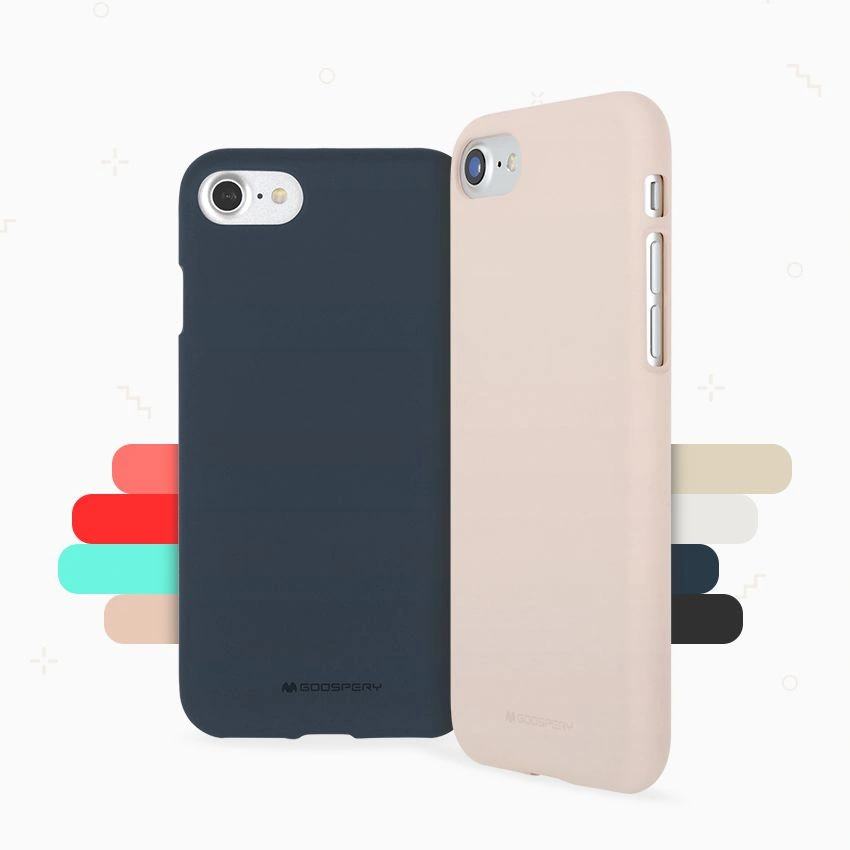
Thermoplastic polyurethane, or TPU, is widely used in phone cases because of its flexibility and resilience. It bends easily without losing shape, making it highly effective in absorbing everyday impacts.
Why TPU is favoured in phone cases
- Shock absorption: Its elasticity cushions devices during accidental falls.
- Secure grip: TPU surfaces are slightly textured, reducing the risk of slipping from the hand.
- Abrasion resistance: The material holds up well against scratches and scuffs, keeping cases presentable for longer.
Practical considerations
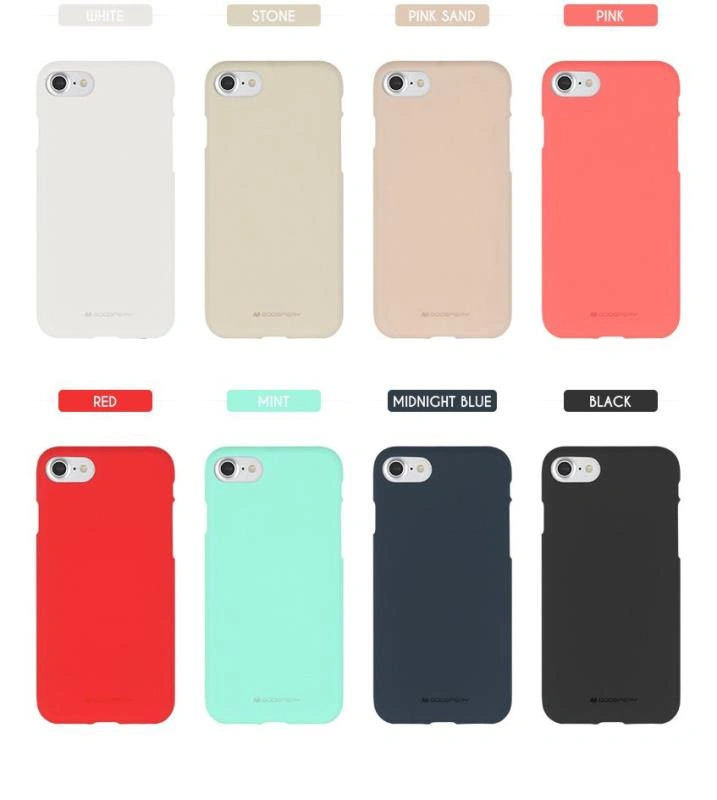
TPU is lightweight and easy to mould, which makes it suitable for producing cases in a variety of shapes, thicknesses, and colours. This versatility allows for product ranges that cater to both functional and aesthetic demands.
However, TPU does have its drawbacks. It may yellow slightly over time when exposed to sunlight, especially in clear cases, and it does not always deliver the same polished appearance as polycarbonate. For this reason, TPU is often used as a bumper or inner lining, paired with stronger materials to create balanced designs.
PC vs TPU: Choosing the Right Material
Polycarbonate and thermoplastic polyurethane dominate the phone case market, but they serve different needs. Understanding how they compare helps businesses choose the right mix of products for their customers.
Strength and Flexibility
PC provides rigidity and structural integrity, while TPU delivers elasticity and shock absorption. Customers seeking impact resistance lean towards TPU, while PC appeals to those preferring a firm, protective shell.
Appearance and Texture
PC supports smooth, glossy finishes and clear designs that highlight the phone itself. TPU cases have a softer, more tactile feel, giving customers a sense of grip and comfort in their hands.
Weight and Bulk
Both materials are lightweight, but TPU can add slight thickness due to its cushioning qualities. PC, being slim and rigid, tends to create a sleeker profile.
Durability and Longevity
PC resists scratches and maintains clarity longer, while TPU withstands everyday wear, drops, and scuffs. Each material excels in a different form of durability, which is why hybrid cases are often popular.
Cost and Manufacturing
TPU is cost-effective and easier to mould into varied designs. PC requires more precise manufacturing but delivers a premium appearance that justifies higher price points.
Environmental Factors
Neither PC nor TPU is easy to recycle on a large scale. TPU is slightly more adaptable in processing, while PC recycling requires specialised facilities. Growing eco-consciousness means sustainability is becoming a greater factor in customer decisions.
Hybrid Cases: The Best of Both Worlds
Hybrid phone cases combine the rigidity of polycarbonate with the flexibility of thermoplastic polyurethane, creating a design that maximises protection while remaining user-friendly. The PC backplate defends against scratches, while the TPU bumper absorbs shocks and improves grip.
Benefits of Hybrid Construction
- Enhanced protection: The dual structure strikes a balance between strength and shock absorption, thereby reducing the risk of damage from accidental drops.
- Improved functionality: TPU edges make the case easier to fit and remove, while the PC back maintains structural stability.
- Appeal across markets: Customers who want slim yet protective designs often see hybrid cases as the ideal compromise.
Behind the Scenes: How Hybrid Cases Are Made
The production of hybrid cases requires precision, as two different materials must be combined seamlessly. Manufacturers often rely on advanced moulding techniques to achieve a secure bond between polycarbonate and thermoplastic polyurethane.
Common Production Methods
- Co-moulding: Both materials are injected into a mould in a single process, ensuring they fuse without gaps.
- Dual-layer assembly: A PC shell and TPU frame are produced separately, then fitted together to create the finished case.
Each method has its advantages. Co-moulding produces a smooth, integrated design, while dual-layer assembly allows for more varied styling and colour combinations.
Consistency at Scale
For large-scale production, maintaining consistency is critical. Even minor flaws in the moulding process can affect durability or create fitting issues. Quality checks at each stage ensure the bond between materials remains strong and the final product meets safety and performance expectations.
Quality Standards Every Retailer Should Know
Phone cases must meet consistent quality standards to perform as promised and maintain customer trust. In Australia, this responsibility is reinforced by the Australian Consumer Law (ACL), which requires that all products sold are safe, durable, and fit for their intended purpose.
Testing Procedures
- Drop tests simulate everyday falls to assess impact protection.
- Abrasion tests evaluate the resistance of surfaces to scratches and wear.
- Flexibility tests ensure TPU bends without breaking, and PC retains its shape under pressure.
Certifications and Industry Benchmarks
Some manufacturers choose to meet military-grade standards, which involve repeated drops and environmental challenges such as heat and vibration. While not mandatory, these certifications can add value for premium case ranges.
The Role of Compliance in Australia
Under ACL, misleading claims about durability or protection can lead to penalties, and unsafe products may face compulsory recalls by the Australian Competition and Consumer Commission (ACCC). This makes quality assurance and accurate product descriptions essential for businesses selling phone cases in the local market.
Sustainability and Recycling in Case Manufacturing
As environmental awareness grows, the sustainability of phone case materials is becoming a significant consideration. Both polycarbonate and thermoplastic polyurethane present challenges in recycling, yet businesses are increasingly expected to address their environmental impact.
Recycling Challenges with PC and TPU
- Polycarbonate (PC): Technically recyclable, but processing requires specialised facilities, which are not widely available.
- Thermoplastic polyurethane (TPU): More adaptable for reprocessing, but large-scale recycling systems are limited.
Sustainability in the Australian Market
Australia has introduced policies aimed at reducing plastic waste, including commitments under the National Plastics Plan 2021. Although phone cases are not singled out, businesses importing or manufacturing them are expected to contribute to waste reduction efforts, particularly through recycling programmes and sustainable packaging.
Alternative Materials
Some manufacturers are experimenting with biodegradable plastics, plant-based polymers, and natural materials such as wood or leather. While these are still niche products, they appeal to environmentally conscious customers and can help retailers differentiate themselves in a competitive market.
The Future of Phone Case Materials
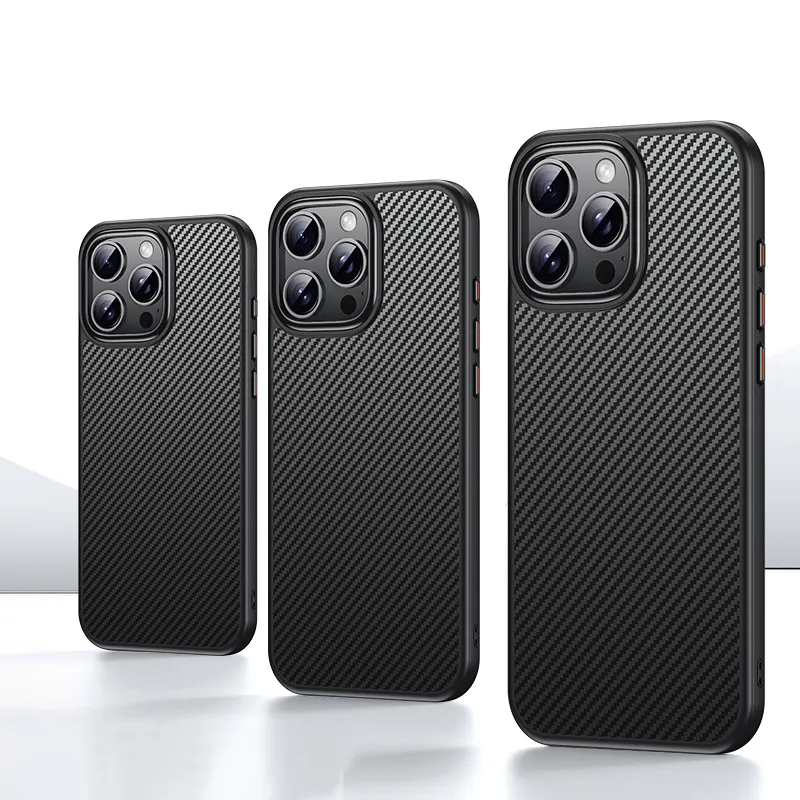
While PC and TPU remain dominant, new materials are emerging that reflect technological progress and rising environmental expectations.
Emerging Innovations
- Carbon fibre offers strength with minimal weight, appealing to premium markets.
- Metals and alloys provide durability, but must be carefully designed to avoid issues such as interference with wireless charging.
- Biodegradable plastics and plant-based polymers are gaining attention as sustainable alternatives, with some manufacturers already bringing compostable cases to market.
Changing Market Expectations
As sustainability moves higher on the consumer agenda, eco-friendly options are likely to become standard rather than niche. Businesses that adapt early to these developments can position themselves as forward-thinking suppliers and strengthen their long-term market presence.
Wrapping Up: What Retailers Should Remember
Phone case materials are more than a technical detail; they shape how customers experience the product. Polycarbonate offers strength and a polished finish, TPU provides flexibility and shock absorption, while hybrid cases bring the two together for balanced performance. New sustainable options are also entering the market, reflecting the shift towards environmentally responsible design.
Choosing the right mix of materials helps create a range that satisfies different customer expectations and adapts to evolving trends. By aligning product choices with demand, retailers and resellers can enhance customer satisfaction and maintain a competitive edge.
Start building a stronger range of phone cases today with Skyline Mobile, a trusted source of high-quality mobile accessories designed to meet modern market needs.

